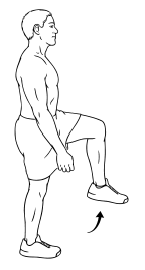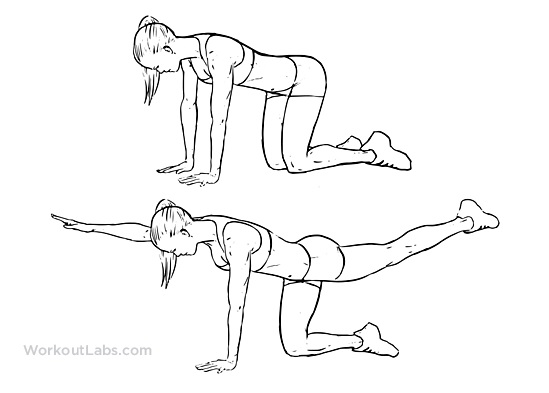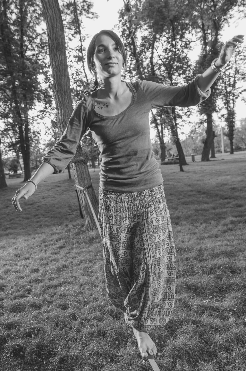As kids, we learned all about the 5 senses – touch, sight, hearing, smell and hearing, but did you know that there is a 6th sense? I’m not referring to intuition or the ability to predict the future or the 1999 movie by M. Knight Shyamalan. I’m referring to the sense of where our body is in space .
Our 6th sense- called proprioception
Proprioception, also called kinesthesia, is the body’s ability to sense its location, movements, and actions. It’s the reason we’re able to move around without consciously thinking about our environment.
Proprioception is what allows us to close our eyes and touch our nose with our index finger. Other examples of proprioception include:
- Knowing whether your feet are on soft grass or hard cement without looking (even when you are wearing shoes)
- Throwing a ball without having to look at the throwing arm and dribbling a basketball while running down the court looking for a teammate to pass it to.
- You also experience proprioception when you’re hiking on a path with holes, rocks or fallen branches.
To prevent injury, your body adjusts, stabilizing your foot and ankle in response to the feedback picked up by your lower limb proprioceptors.
How it works
Proprioception is basically a continuous loop of feedback between sensory receptors throughout your body and your nervous system. Sensory receptors are located on your skin, joints, and muscles. When we move, our brain senses the effort, force, and heaviness of our actions and positions and responds accordingly.
Deep in all our muscles are fibers called muscle spindles: This is a bundle of fibers and nerves that record muscle stretch. When the muscles are stretched, others contract, and a touch receptor called piezo2 then transmits all that information to your spinal cord to determine where your limbs are.
Proprioception can worsen with age, injury, or disease, making daily tasks harder and increasing your risk of injury and falls.
As with almost everything in life, the more you practice proprioception, the more it improves
Adding proprioception training exercises to your routine can lower your risk of common injuries & reinjuries like ankle sprains and will improve your fitness.
However, if you do notice a drastic change in your balance or have a new injury, speak with a trained physical therapist or other healthcare provider first.
Exercises to improve proprioception
Here are a few exercises to add to your routine to maintain or improve your 6th sense.
1. One-leg balance test

- Stand with your feet hip-width apart and your hands on your hips.
- Shift your weight onto your left foot and lift your right foot a few inches off of the ground.
- Stand in this position for 30 seconds and switch sides. Repeat 2–3 times.
From here you can progress to the One-leg 3–way kick
2. One-leg 3-way kick

- Stand with your feet hip-width apart and your hands on your hips.
- Stand on your left foot and lift your right foot in front of you a few inches off of the ground. Hold for 2–3 seconds, then return to the starting position.
- Follow the same steps as you lift your right leg to the side of your body and then behind you.
- Switch sides and repeat this 2–3 times.
3. Bird Dog

This is a great exercise for spinal stability
- Start on all fours with your knees aligned with your hips and your shoulders aligned with your hands.
- Be sure your back and neck are in a neutral position.
- Extend your left arm forward and your right leg back while leaving your other arm and leg on the ground for support.
- Keep your hips square to the floor and prevent any side to side movement.
- Hold for 2–3 seconds, then alternate sides.
- Repeat this 8–12 times.
4. Tightrope walk

- Tape a straight line about 3–6-feet (1–2-meters) long on the floor. Alternatively, use a long piece of string or rope or the line in a tiled floor.
- Stand with your feet hip-width apart and your hands on your hips.
- Place one foot on the line or beside the rope. Then, place your other foot directly in front of it as if you’re walking a tightrope.
- Walk to the end of the line without stepping off to the side. Turn around and walk back.
- Repeat this 3–4 times.
Proprioception exercises reduce the risk of injury by teaching the body to react appropriately to sudden changes in the environment. As with anything, start with simple static balance exercises and progress to more complex dynamic exercises as your proprioception improves.
Improving your 6th sense will allow you to gain and maintain the balance skills necessary to maintain stability; improve agility and coordination – willpower not required.
Looking for other fitness tips? Find more on the blog here
Learn more about Fired Up Fitness and how we can help you achieve your health and fitness goals in the comfort and safety of your own home by clicking here
Make sure to subscribe and listen to my podcast Willpower Not Required for more tips and ideas you can add into your day to live your life to the fittest! Listen on all podcast platforms or watch on YouTube

